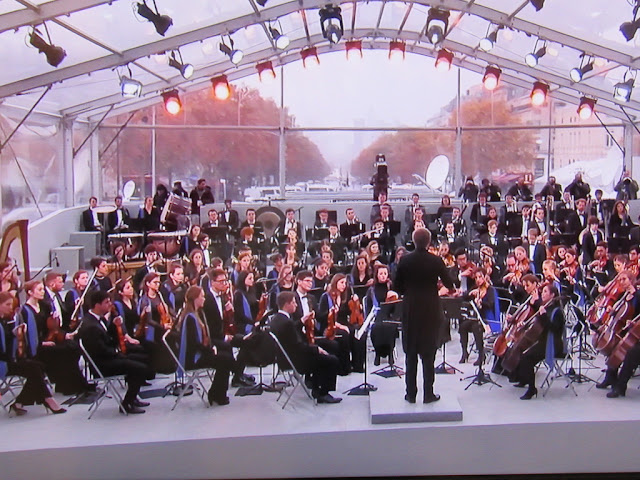 |
Police and the peaceful demonstrators were both taken by surprise at the violence in this sleepy tourist town of 20,000 people. Many police were traumatized. In covering the day, the headlines of the local newspaper, L'Éveil, asked a simple question: "Why?" Below is a summary of the newspaper's account of the events. Photos were taken by L'Éveil photographers.
|

At 10 a.m. the Gilets Jaunes march on the north side of the ring road around the city and completely block all traffic. They are heading for Breuil Square, which fronts the Prefecture, the region's government building. About 3,000 persons participate in a peaceful demonstration. However, by 1 p.m. tensions are raised and 30 demonstrators taunt police and soldiers who are positioned behind the gates of the Prefecture.
 |
Photo by © Vincent JOLFRE
|
At 4 someone lights a fire in front of the gate of the Prefecture and claims that they did this because the Prefect would not talk with them. At 5 Laurent Wauquiez (right), president of the Auvergne-Rhône-Alpes Region and president of the Republican Party, meets with protesters to discuss their demands.

At the same time, the crowd shoots tear gas toward the Prefecture. A farmer who brought a haystack with him to the demonstration sets it on fire in front of the gate. Someone else adds tires to the fire. Others sprinkle officials with fire extinguishers to blind them. Police quickly disperse this group.
At 5:30 some people try to force their way into the Prefecture but without success. Soon afterward they exchange blows with police, who eventually retreat. Even though it is dark at this hour, there are still several hundred Gilets Jaunes in the square. Some of them take paving stones from the Breuil Fountain and throw them at police. At 6:20 someone set a fire inside the Prefecture. By 9 it is extinguished.

 |
Others knock over a glass recycling bin and start throwing bottles at the Prefecture building.
|

Firefighters have a difficult time getting to the fires. By 8:20 the scene has escalated to chaos. At 9, 20 CRS (national police) arrive. They clear the square and make at least six arrests. By 10, order has been restored in the city. Twenty demonstrators and police have been wounded.
President Macron Visits Le Puy
On Monday, December 3, French President Emmanuel Macron came to the city without advance warning or fanfare. His visit was characterized by L'Éveil as "furtive." People who happened to see the president's motorcade mocked him and called for his resignation, as have Gilet Jaune protesters throughout France.

The purpose of Macron's visit was to see the damage done to the Prefecture and to honor those who protected the city on Saturday.

In a tweet published on Tuesday, December 4, Macron said:
"To the agents of the Prefecture of Puy-en-Velay: you experienced something terrible Saturday. Nothing justifies this violence. Through you, it is the state that has been attacked. But who else but the state responds to everyone's anger? Who educates? Who cares? Who helps ? It's you. I will never let the state be attacked for that reason. Your sadness I share it. I am proud of you."
Citizens in Le Puy were shocked by the violence and dismayed at the way it happened.
Three people were arrested during the violence at the prefecture and tried in court on Monday, December 3. Two of them were sentenced to three months in prison and the third person's case was dismissed. The defendants told L'Éveil reporters that they had never done such violent deeds before in their lives and didn't understand what came over them. It was later revealed that many people on Saturday night were drunk.













































